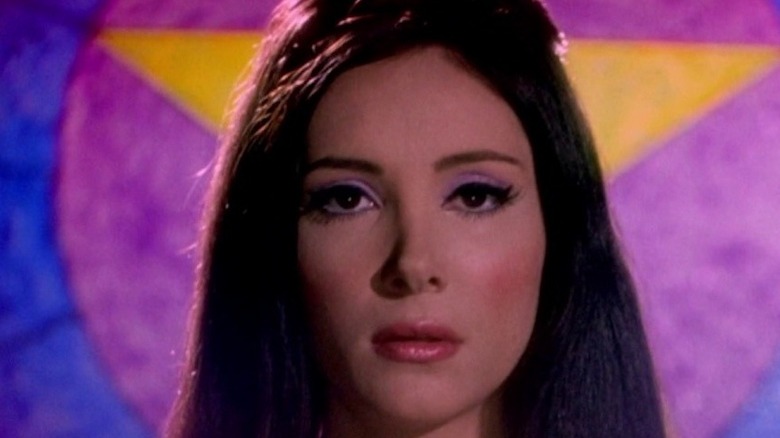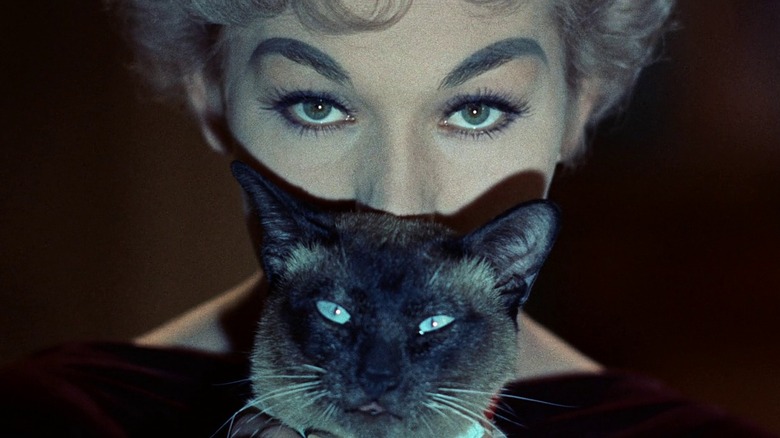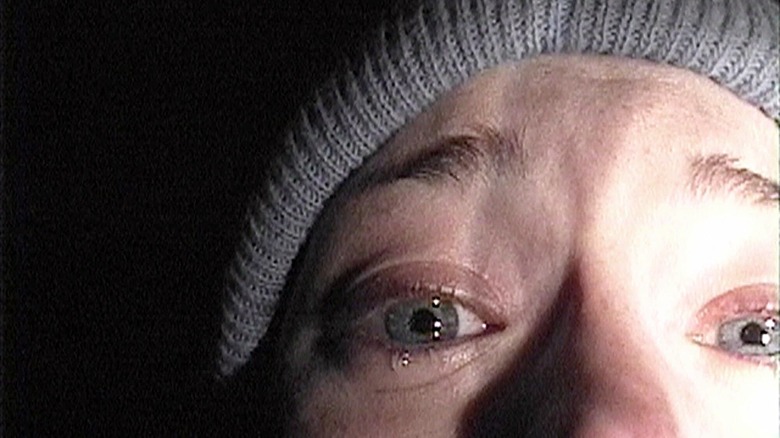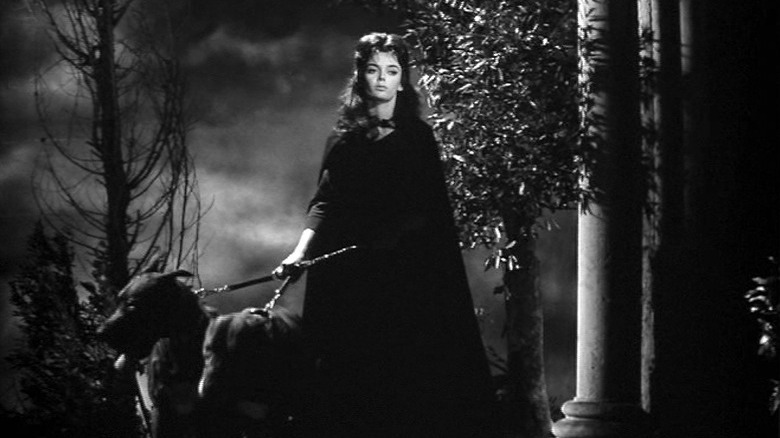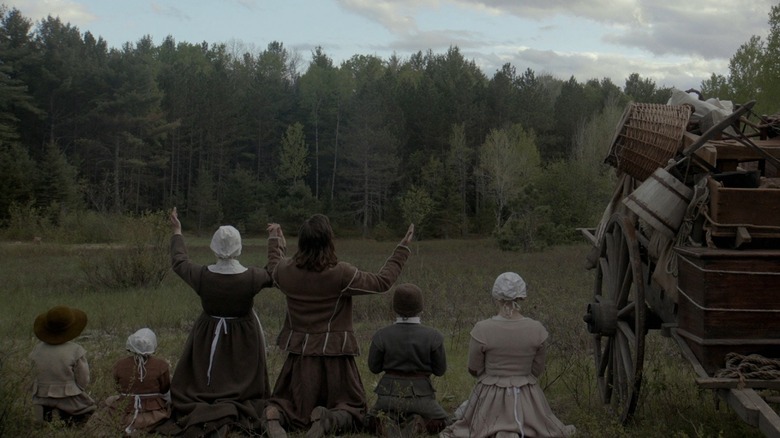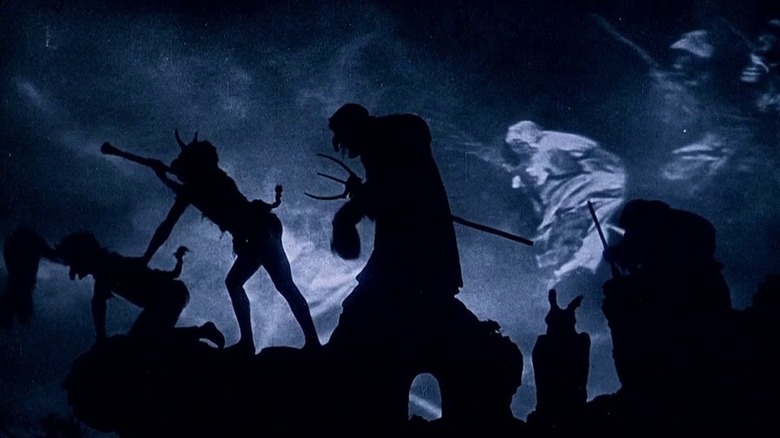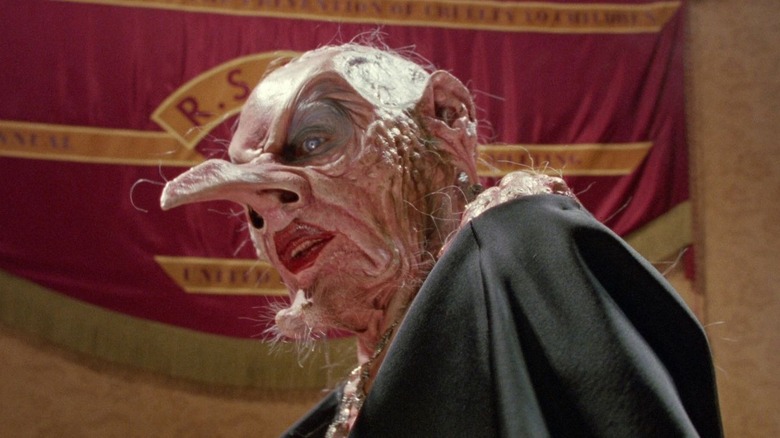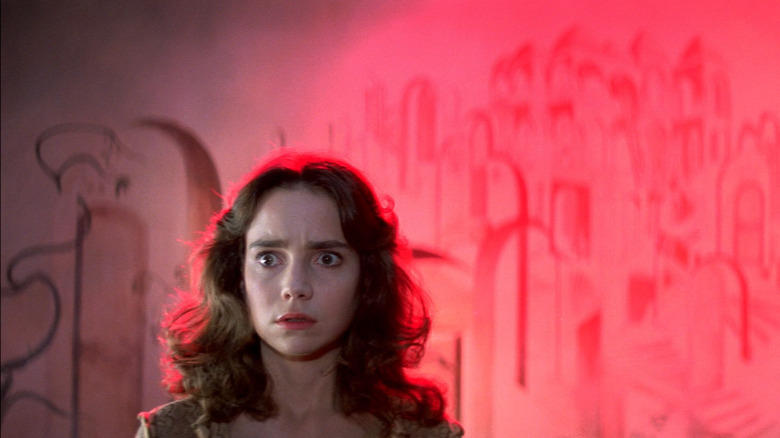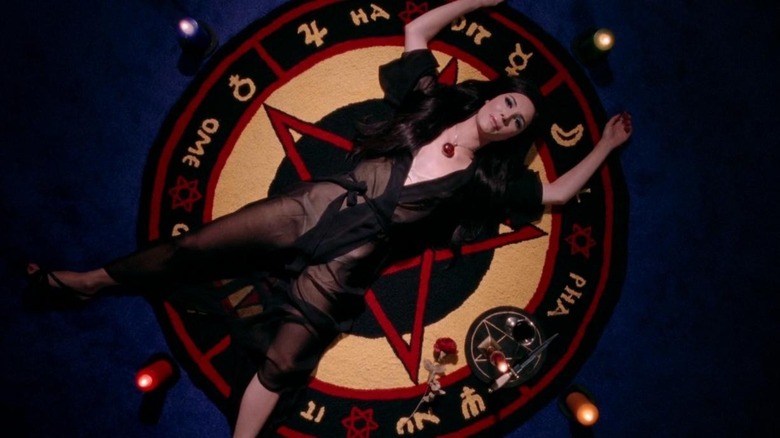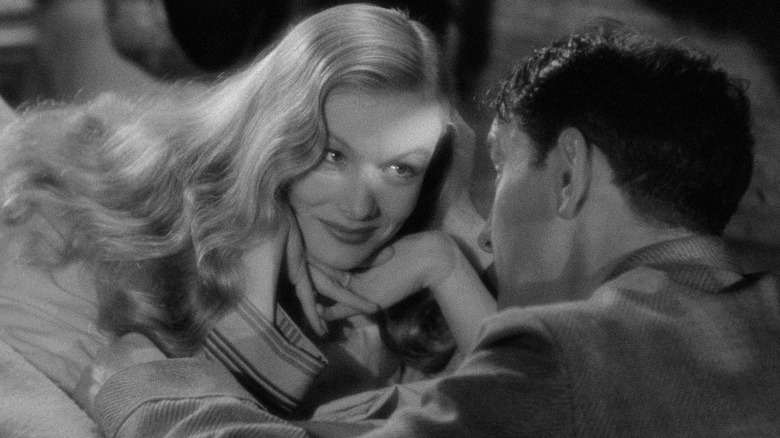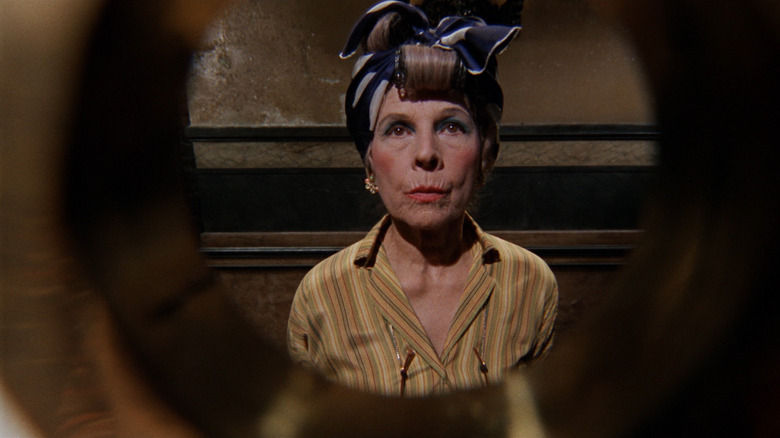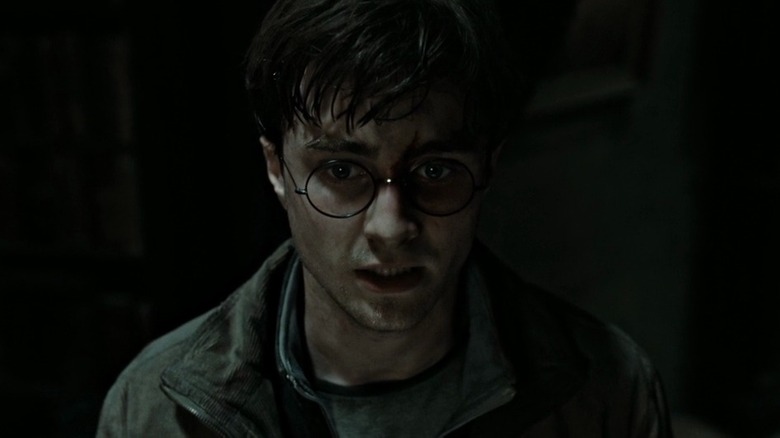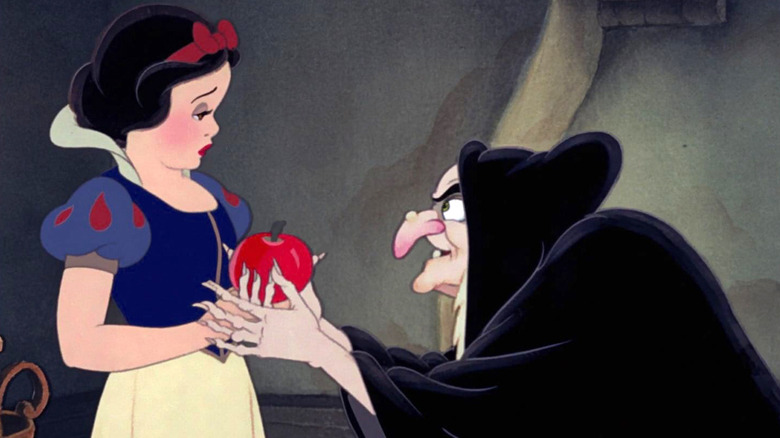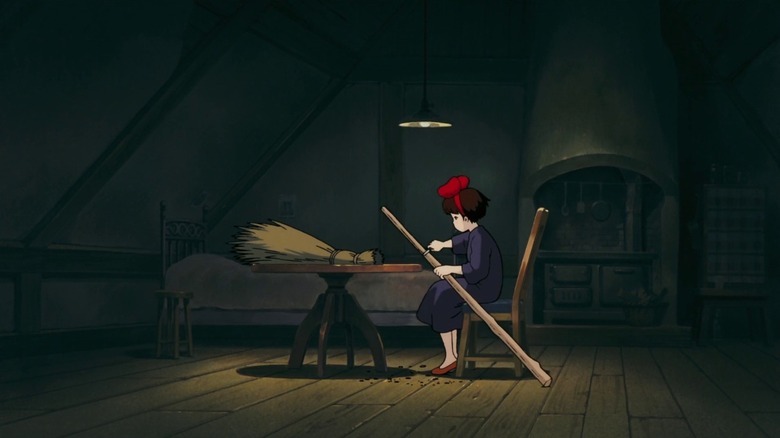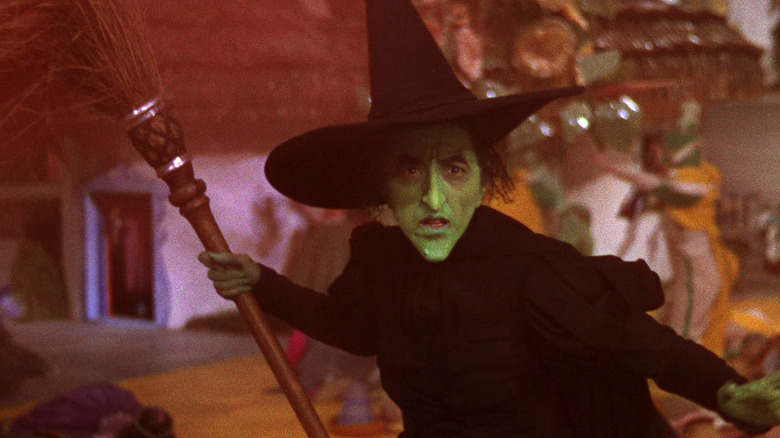The Best Movies Featuring Witches Ranked
In film, as in history itself, witches have a bit of a reputation. They're in league with the devil, they chow down on children, bewitch their enemies, and get up to all manner of nefarious misdeeds. Stories of powerful women, wielding dark magic to exact their whims, pepper the annals of horror films. And yet, as far as cinema is concerned, murderous crones and conspiratorial covens aren't quite the whole story. Some witches find themselves at the beating heart of romantic comedies, big studio musicals, and animated kids classics. Mutable and impossible to put in a box, the cinematic witch crosses many a genre boundary and is all the more powerful for it.
In an abundance of witch content, across such a wide array of genres, it can be difficult to narrow down the best of the witchy best. Luckily for you, we've consulted the critical consensus over at the review aggregator Rotten Tomatoes, as well as the average ratings from IMDb users, to come up with the top 14 witch films of all time. Many of them reside in the dank, devious corner of the horror section, but others are far more benign and delightful. So grab your nearest broom and give the potions a break. Here, for your viewing pleasure, are the fourteen best witch films according to Rotten Tomatoes and IMDb.
Bell, Book, and Candle (1958)
While witches tend to conjure images of hovel-dwelling medieval crones, more than a few entries on this list dare to imagine what a thoroughly modern witch might look like. For "Bell, Book and Candle," the modern magic practitioner is less concerned with witch hunters than petty interpersonal squabbles. And armed with an arsenal of enchantments, any witch worth her salt is capable of stirring the pot (or is that the cauldron?).
Directed by former MGM actor Richard Quine, the 1958 film tells of an ennui-filled secret witch named Gillian Holroyd (Kim Novak) who takes an interest in her neighbor Shep (James Stewart). Unfortunately for Gillian, Shep is engaged to the absolutely despicable Merle (Janice Rule), who also happens to be Gillian's old nemesis from college. Luckily it's nothing a little magical fiddling won't sort out, and Gillian swiftly bewitches Shep who falls instantly, and madly, in love.
In "Bell, Book and Candle," the typical misunderstandings of the romantic comedy genre take on a delightfully spooky and supernatural aspect, from Gillian's feline familiar Pyewacket to some adorably love-bound in-universe rules about what happens, exactly, when witches fall in love. Taking place during Christmas in New York, "Bell, Book and Candle" is, in a word, enchanting. Oh, and if you needed two more selling points: Jack Lemmon and comedy legend Ernie Kovacs.
With a 75% critical consensus on Rotten Tomatoes and a 6.8 on IMDb, it's clear that as far as witch films are concerned, "Bell, Book and Candle" continues to charm all these years later.
The Blair Witch Project (1999)
In October 1994, three film students set out to produce a documentary about a local legend plaguing Burkittsville, Maryland. Armed with a camcorder, Heather (Heather Donahue), Mike (Michael C. WIlliams), and Josh (Joshua Leonard) listen intently as the locals warn of missing children, ritualistic murders, and an old woman whose feet never touch the ground. Undeterred by the chilling accounts of the Blair Witch, the trio set off into the woods.
Soon, strange happenings begin to plague their expedition: unexplained noises, teleporting cairns, and ominous, pentagram-like stick figures suspended from trees. As tensions mount and the bizarre events escalate, the trio begins to rightly suspect that they might not make it out of the woods alive.
Comprised of purportedly "recovered footage," Daniel Myrick and Eduardo Sánchez' 1999 film is frequently praised as a groundbreaking entry in the found-footage genre. The titular Blair Witch is an unseen but wholly oppressive presence; lurking just out of sight, tormenting her victims, and sowing seeds of madness to sweeten the hunt.
However you feel about the legacy of the "shaky cam" format or the flick's more dated aspects, its enduring power as a witchy terror trip cannot be denied. Boasting a critical consensus of 86% on Rotten Tomatoes and a 6.5 on IMDb, the oft-proclaimed greatness of "The Blair Witch Project" is absolutely deserved.
Black Sunday (1960)
"Black Sunday" begins with one of the most grisly tone-setting opening scenes in genre film: a ritualistic branding, long cultish robes, and a spiked mask hammered onto the face of an accused witch. If you catch yourself feeling bad for Asa (Barbara Steele), recall that she is more than capable of exacting vengeance from beyond the pale. With her paramour Igor Javutich (Arturo Dominici) in tow, Asa swears to exact her revenge on her accuser (and brother) Griabi. Two centuries later, a pair of clumsy academics (John Richardson and Andrea Checchi) revive the fetid corpse of Asa, who proceeds to wreak havoc on Griabi's descendants. But hey, if you were impaled and immolated you'd be pretty sore about it too.
Don't let the age of "Black Sunday" fool you. Six decades later, few films are as boldly bewitching and atmospheric as this. Adapting Nikolai Gogol's short story "Viy," the film marks the directorial debut of the great Italian genre director Mario Bava (who also wrote the film and devised its special effects). A striking gothic horror film that has yet to lose its power after all these years, "Black Sunday" holds an 86% critical consensus on Rotten Tomatoes and a 7.2 on IMDb.
The Witch (2015)
Set in 17th-century New England, "The Witch" begins with a family cast out into the unknown, banished from their puritanical colony over a religious dispute. Sent off to fend for themselves, William (Ralph Ineson), his wife Katherine (Kate Dickie), and their four children build a farm near a large, engulfing forest. There, Katherine bears another son.
One day, while the eldest Thomasin (Anya Taylor-Joy) is playing peekaboo, the baby abruptly disappears; the victim of a nearby witch who has used the unbaptized child's corpse to make a flying ointment. The trauma of the infant's abduction throws the family into chaos, pointing fingers and flaring tempers as more unexplainable phenomena take hold of their small slice of earthly paradise. All signs seem to point to Thomasin: whose adamant goodness is tested by her family's growing conviction that she is the root cause of their misfortunes.
The feature directorial debut of Robert Eggers, "The Witch" embraces the anxieties (and period-accurate dialogue) of its setting, examining the blurry line between superstitious scapegoating and well ... there's a joke about the family's ominous goat, Black Phillip, in here somewhere. The film enjoys a 90% critical consensus on Rotten Tomatoes and a 6.9 on IMDb, and is sure to delight and unsettle those with a penchant for the darker corners of history.
Häxan (1922)
A unique entry, both on this list and within genre film more broadly, Benjamin Christensen's 1922 silent horror film is an oddity that continues to frighten and entrance nearly a century later. Told through the lens of a dramatized documentary, "Häxan" charts the historical and psychological roots of the superstitions surrounding witchcraft.
Beginning in the Middle Ages and making its way to the 20th century, the film depicts the mythos surrounding witchy women with unbridled glee, relishing in the macabre suggestion that secret cabals of women have, for centuries, formed pacts with the devil (who is portrayed in the film by Christensen himself). All the while, "Häxan" forwards the thesis that witch hunts themselves most likely stemmed from misunderstandings of mental and neurological disorders, a patently empathetic and arguably feminist proposal that gives "Häxan" a knowing edge despite being in the neighborhood of 100 years old.
All told, Christensen is able to have the best of both worlds: indulging in the gothic and the ghastly while acknowledging the real-world hurt and harm caused by superstition and mistreatment of the mentally ill. The film enjoys a 91% critical consensus on Rotten Tomatoes and a 7.7 on IMDb. Don't let its age fool you, the devious delights of "Häxan" have more than stood the test of time.
The Witches (1990)
Based on Roald Dahl's 1983 book of the same name, "The Witches" is the kind of nightmare fuel that would do a Grand High Witch proud.
The film follows a young boy named Luke (Jensen Fisher) whose kindly grandmother Helga (Mai Zetterling) becomes his legal guardian after his parents are killed in a car accident. From a young age, Helga warns Luke about witches: female demons who conceal their deformities and loathe children more than anything. On Luke's ninth birthday, Helga's declining health pushes the pair to spend their summer at a seaside hotel. There, to Luke's horror, he discovers the hotel is also hosting a convention of witches. While eavesdropping, he overhears their powerful leader (Anjelica Huston) unveil her diabolical plan to turn the world's children into mice.
Featuring imaginative puppetry by Jim Henson and witty direction from Nicolas Roeg, "The Witches" is one of those "children's movies" that absolutely doesn't feel like it was made for kids. Freaky, repulsive, and imbued with a real sense of danger, "The Witches" is one of the few adaptations of Dahl's work to truly capture the author's uncannily dark sensibilities. Huston's performance as the Grand High Witch must be seen to be believed, though you may want to bring along a barf bucket. Boasting an imaginative Brothers Grimm-like mythology and powerful sense of peril, "The Witches" fully deserves its 93% Rotten Tomatoes rating and 6.9 IMDb score.
Suspiria (1977)
Suzy Bannion (Jessica Harper) arrives in Germany during a torrential downpour. She's a young American ballet hopeful bound for the Tanz Dance Akademie, a prestigious boarding school whose reputation precedes it. But from the moment she arrives, Suzy senses that something unnatural, and evil, lurks in the walls of the age-old institution. She hears noises, falls inexplicably ill, and becomes increasingly convinced that the local murders are somehow connected to the school's founder, Helena Markos, an alleged witch.
Directed by Dario Argento, who co-wrote the screenplay with the great Daria Nicolodi, "Suspiria" is one of the most influential and frightening horror films of all time. A top-tier entry in the supernatural Italian horror tradition, "Suspiria" dabbles wholeheartedly in the murkier, disorienting aspects of witchy fables. Full of crimson reds befitting the deadliest poisoned apple, the film is an absolute terror trip that consciously pulls the aesthetic of Walt Disney's "Snow White" into a decidedly nightmarish space (via Another Magazine). Leaning headlong into the phantasmagoric possibilities of Technicolor, "Suspiria" imbues witchy conspiracy with delirious, hypnotically dark power.
An art deco nightmare that boasts an inimitable dark magic (and a face-melting score from the prog-rock band Goblin), "Suspiria" holds a 93% on Rotten Tomatoes and a 7.4 on IMDb.
The Love Witch (2016)
Elaine (Samantha Robinson) is a beautiful young witch with one thing in mind: finding a man who will truly love her. Using all manner of spells, potions, and rituals at her disposal, Elaine's desperate bid to get men to fall in love works too well, leaving her with a long string of infatuated corpses. When she finally meets the man of her dreams (Gian Keys), Elaine falls over the edge of sanity, as her quest for the perfect romance begins to crack.
An absorbing visual homage to the technicolor exploitation films of the 1960s, "The Love Witch" is a tour-de-force from Anna Biller who not only directed but wrote, edited, produced, and scored the film. Boasting a visual confidence that straddles the boundary between nostalgia and revisionism, "The Love Witch" is a visual delight and a pointed commentary on sex, gender, and the warped expectations of modern romance.
With a near-perfect 95% critical consensus on Rotten Tomatoes and a 6.2 on IMDb, it's easy to fall head over heels for "The Love Witch."
I Married a Witch (1942)
"I Married a Witch" is the answer to the question we've all been asking ourselves: What if Mario Bava's "Black Sunday" and "Bell, Book and Candle" got in a car crash? The result is René Clair's fantastic 1942 romantic comedy about a gorgeous 17th-century witch named Jennifer (Veronica Lake) who returns from beyond the grave to unsettle the life of one of her persecutor's descendants.
Before being burned at the stake for witchcraft (did we mention this is a comedy?) Jennifer curses her executor's bloodline to eternally fall in love with the wrong women. When Jennifer's soul is freed from its spiritual prison by a fortuitous bolt of lightning, she gets to work ruining the love life of the descendent-at-large, an aspiring politician named Wallace Wooley (Fredric March). In a twist Jennifer herself didn't see coming, the vengeful witch finds herself slowly falling in love with her would-be victim.
An easy, breezy comedy grounded by Lake's enchantingly coy performance, "I Married a Witch" is a supernaturally-tinged melange of allure, charm, and screwball antics. Adorable and campy to its core, "I Married A Witch" enjoys a 95% critical consensus on Rotten Tomatoes and a 7.1 on IMDb. Turns out centuries of spite are no match for imaginative flights of fantasy, the best smoke effects 1942 could muster, and a magical love letter to magnetism and enchanted love.
Rosemary's Baby (1968)
Released only a year after Ira Levin's novel of the same name took the world by storm, "Rosemary's Baby" forwards the unsettling, skin-crawling idea of satanic devotees living, and scheming, right under our very noses. What if you couldn't pick a witch out of a police line-up? What if they looked like your next-door neighbor? What if witchy covens weaponized maternal instincts to brings about the birth of the Antichrist himself?
Roman Polanski's 1968 film envisions the servants of Satan as a predatory force; over-friendly neighbors all-too-willing to take advantage of a young couple's hopes, dreams, and trusting nature. The film sees a young couple (Mia Farrow and John Cassavetes) slowly sink into a trap fueled by gaslighting, barbed gender roles, and pernicious pregnancy. The film earned Ruth Gordon an Oscar as the friendliest, creepiest neighbor one could ever avoid asking for a cup of sugar.
Widely regarded as one of the greatest horror films ever made, "Rosemary's Baby" was selected for preservation in the National Film Registry in 2014, so that it can terrify and unsettle generations of filmgoers to come. With a 96% on Rotten Tomatoes and a tremendous 8.0 on IMDb, the flick is every bit as sublimely terrifying as its reputation suggests.
Harry Potter and the Deathly Hallows: Part 2 (2011)
Maybe you didn't need to consult any tea leaves to anticipate that at least one "Harry Potter" film would make this list. As far as the broad scope of witch films is concerned, the "Harry Potter" franchise is undoubtedly one of its brightest stars.
For clarity: we've awarded this fourth-place slot to the final entry in the franchise because it enjoys the highest Tomatometer score (a dazzling 96%). But really, use your imagination and pretend like we're praising the whole dang lot of them. After all, what makes "Harry Potter and the Deathly Hallows: Part 2" so great is its culmination of everything that came before it: the growth and maturity of three magical pals and their increasingly dangerous run-ins with a malicious dark lord intent on world domination, no matter the cost.
A thrilling, visually spectacular conclusion that brings the franchise to a satisfying conclusion (a difficult feat!), David Yates' cinematic punctuation mark sees Harry (Daniel Radcliffe) finally undertaking his long-building showdown against the nefarious Lord Voldemort (Ralph Fiennes). Sure enough, like many heroes before him (magical or otherwise), Harry must make the ultimate sacrifice to rid his world of evil.
Snow White and the Seven Dwarfs (1937)
Based on the 1812 Brothers Grimm fairy tale, "Snow White and the Seven Dwarfs" follows its titular orphaned princess (voiced by Adriana Caselotti) as she evades the assassination attempts of her stepmother (voiced by Lucille La Verne). An evil vanity-riddled ruler who also happens to be a witch, the Evil Queen cannot rest until Snow White is dead. Luckily, Snow White's magnetic presence softens hard hearts, and she readily evades her stepmother's murderous grasp by taking shelter in the woods with seven character-filled dwarfs. But the Evil Queen's desire to literally rip out Snow White's heart knows no bounds, pushing the villainess deeper and deeper into the occult to see her murderous plot through.
"Snow White and the Seven Dwarfs" marked Walt Disney's first foray into feature-length animated filmmaking. The film was a tremendous commercial and critical success (at 98% on Rotten Tomatoes) and even earned an Honorary Academy Award "as a significant screen innovation which has charmed millions." "Snow White and the Seven Dwarfs" is everything a good fairy tale should be, which is to say equal parts charming and terrifying.
Kiki's Delivery Service (1989)
At thirteen years old, it's time for Kiki to leave home with her talking black cat. Kiki is a witch in training, and she's at the point in her young life where she needs to live independently. An adept flyer, Kiki decides to open up a "Witch Delivery Business" where she hand-delivers goods by broomstick. But making her way in the world and pursuing her passion is harder than it seems. Overwhelmed and overworked, Kiki is horrified to discover that her witchy powers have suddenly vanished.
Sure, it's a "witch movie." But there isn't a malicious bone in any part of "Kiki's Delivery Service." Arguably the cutest movie ever made about creative burnout and depression, Hayao Miyazaki's 1989 film is a beautiful, resonate film about the ups and downs of striking out on your own. Light, airy, and refreshingly low-stakes, the film acutely pinpoints the isolation of being a stranger in a strange land, tasked with making it all work somehow.
Boasting a completely deserved 98% on Rotten Tomatoes and a 7.9 on IMDb, "Kiki's Delivery Service" can put a spell on us anytime.
The Wizard of Oz (1939)
With rainbows on her mind and a desperate desire to leave her sepia-toned rural life in the dust, young Dorothy Gale (Judy Garland) finds herself in a magical world after a twister passes over her family farm in Kansas. Now in the technicolor land of Oz, Dorothy makes fast friends with a scarecrow, a tin man, and a lion as they make their way down the yellow brick road to implore the ruling Wizard to grant their wishes. But the cackling Wicked Witch of the West (Margaret Hamilton) is never far behind, dead set on crashing the party and retrieving her slain sister's ruby slippers, her army of flying monkeys in tow.
Is there an on-screen witch more iconic than Hamilton's turn as the green-skinned, hook-nosed Wicked Witch of the West? We think not. Malignant and vengeful, with tricks and ill deeds up her sleeves and a devilish pep in her step, it's hard not to root for this scene-chewing villain. Rightly cherished as one of the greatest films ever made (with a 99% on Rotten Tomatoes), the Wicked Witch of the West is right at home in a film that is, at its heart, pure magic.
